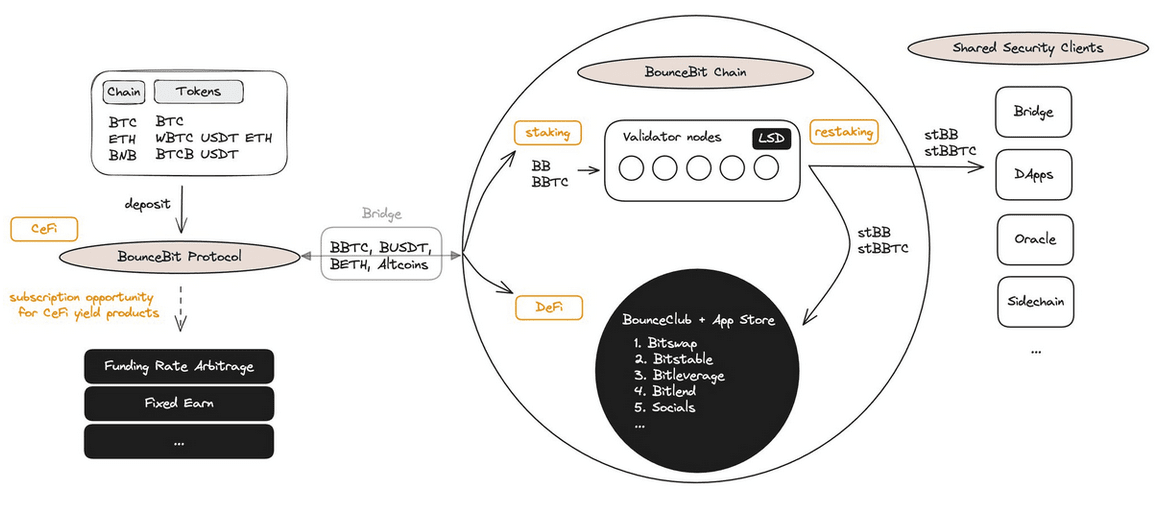Not confining itself to the crowded 'Layer 2' narrative, but rather reshaping BTC's role with an asset-driven PoS Layer 1. From a third-party perspective, I prefer to view it as a new type of BTC infrastructure that connects 'security, yield, and interoperability.'

Its core is a dual-staking mechanism: validators need to stake both BB and BTC simultaneously, reinforcing network security and the capital efficiency of BTC. BounceBit does not bind the Bitcoin mainnet at the protocol layer but integrates it at the asset layer, harmonizing the credibility of BTC with the programmability of the new chain, retaining independent sovereignty while allowing BTC to truly participate in network security and value capture.
In terms of interoperability, BounceBit natively embraces the EVM ecosystem, recognizing and accepting active forms of BTC such as BTCB and WBTC, aggregating multi-chain liquidity. For developers and strategists, this means that in a familiar EVM environment, BTC assets can be utilized as collateral and for settlement, expanding into richer applications and yield scenarios.
More importantly, it chooses 'transparent CeFi' as the foundation: hosted by Mainnet Digital and introducing Ceffu's MirrorX architecture to achieve 'assets not entering the custody, strategies able to place orders.' Assets are fully retained in MPC custody, transactions are executed in a controlled environment, T+1 off-chain settlement, and on-chain reconciliation, which not only enhances capital efficiency but also significantly reduces counterparty risk.
At the security and compliance level, MirrorX controls fund movements using MPC threshold signatures and multi-party authorizations, complemented by full monitoring and auditable processes; Elliptic's on-chain analysis and forensic capabilities cover vast multi-chain data, supporting real-time risk scoring and automated compliance reporting, maintaining risk control strength even in high-throughput scenarios. Security, compliance, and efficiency form a trinity, creating a closed-loop risk management for institutional-level.
For the 'conservative and prudent' BTC user profile, BounceBit does not force the migration of cold-stored assets but prioritizes activating the already active BTC: mapping BTC used for trading and lending in CEX or EVM networks to BTCB/WBTC through compliant custody entrances and bridging it to BounceBit, obtaining on-chain yields and higher utilization without directly touching the complex operations of the Bitcoin mainnet.
From a third-party perspective, BounceBit seems to bring the insights of the 'Lido moment' on Ethereum into the BTC world: not to replace CeFi, but to let CeFi operate in the sunlight, transforming transparency and auditing into sustainable productivity. For asset management institutions, quantitative teams, and high-net-worth users seeking safety margins while wanting to unleash BTC efficiency, this is a 'deployable, auditable, and scalable' practical path that should be prioritized in your BTC business stack.


